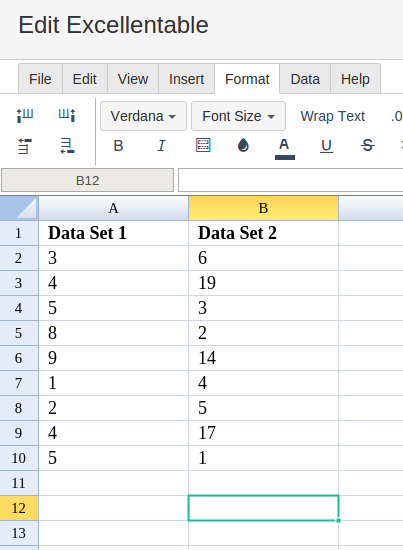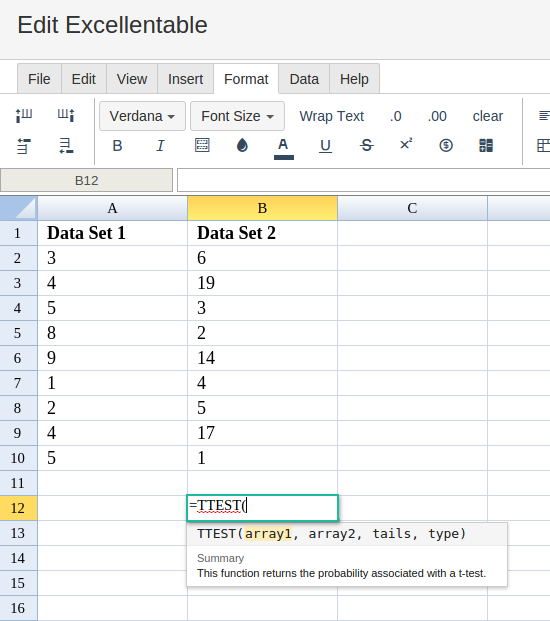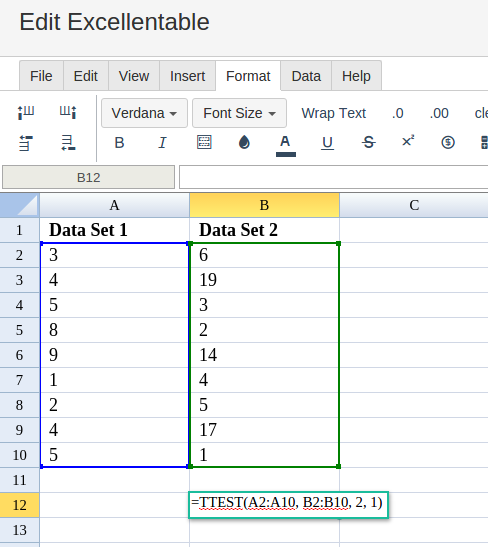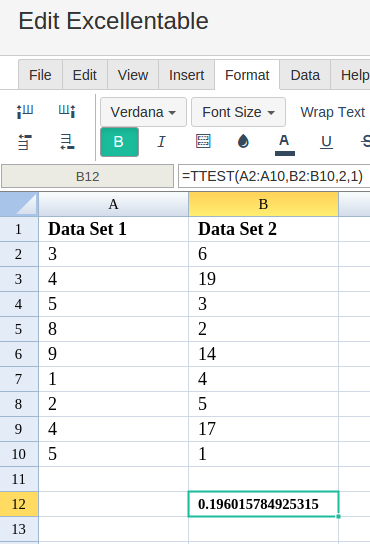TTEST
Definition
Returns the probability associated with t-test. Determines whether two samples are likely to have come from the same two underlying populations that have the same mean.
Sample Usage
TTEST(A1:A4, B1:B4, 2, 1)
Syntax
TTEST(range1, range2, tails, type)
range1- The first sample of data or group of cells to consider for the t-test.range2- The second sample of data or group of cells to consider for the t-test.tails- Specifies the number of distribution tails.If
1: uses a one-tailed distribution.If
2: uses a two-tailed distribution.
type- Specifies the type of t-Test.If
1: a paired test is performed.If
2: a two-sample equal variance (homoscedastic) test is performed.If
3: a two-sample unequal variance (heteroscedastic) test is performed.
Notes
tailsandtypemust be numeric.range1andrange2must have the same number of data points.TTESTuses the data inrange1andrange2to compute a non-negative test. Iftailsis set to1,TTESTreturns the probability of a higher value of the t-statistic under the assumption thatrange1andrange2are samples from populations with the same mean. The value returned byTTESTwhentailsis set to2is double that returned whentailsis set to1and corresponds to the probability of a higher absolute value of the t-statistic under the "same population means" assumption.
In order to use the TTEST formula, start with your edited Excellentable:

Then type in the TTEST formula in the area you would like to display the outcome:


By adding the values you would like to calculate the TTEST formula for, Excellentable will generate the outcome:

A
|
B
|
|
|---|---|---|
1
|
||
2
|
||
3
|
||
4
|
||
5
|
||
6
|
||
7
|
||
8
|
||
9
|
||
10
|
||
11
|
||
12
|
